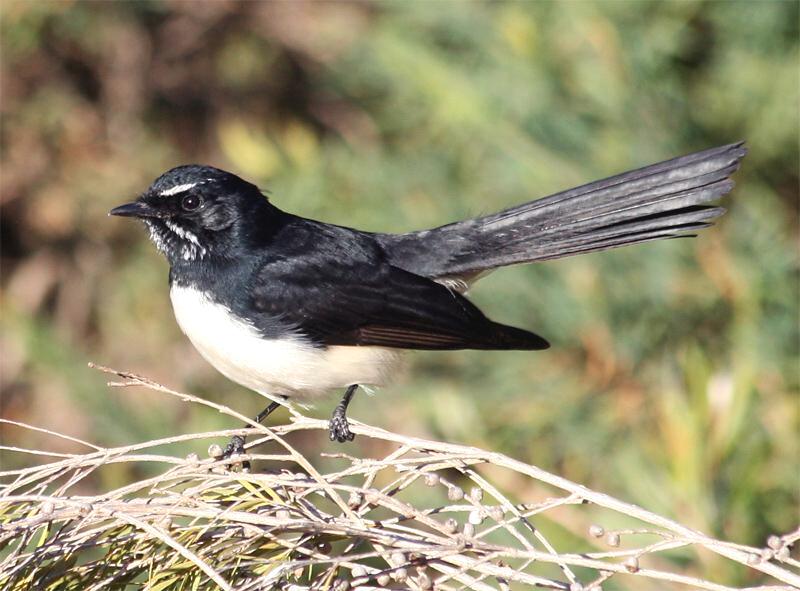|
| 질의: new international encyclopedia | 결과: 55번째/86 | |
Willie Wagtail (Rhipidura leucophrys) - Wiki
| 제목: | Willie Wagtail (Rhipidura leucophrys) - Wiki
| |

| 해상도: 800x591
파일크기: 71017 Bytes
등록시간: 2007:09:13 15:15:24
|
Willie Wagtail
From Wikipedia, the free encyclopedia
[Photo] Willie Wagtail (Rhipidura leucophrys). Date 2006-04-09. Author Jason Girvan
The Willie Wagtail or Willy Wagtail (Rhipidura leucophrys) is an Australian passerine bird. It is a frequent sight in most habitats excepting treeless grasslands and thick forest.
Taxonomy
Wagtails are included with the fantails, monarch flycatchers, and drongos in the family Dicruridae. Some sources, notably the Handbook of Birds of the World and BirdLife International, classify all species of Rhipidura in the separate family of Rhipiduridae. Most sources, including The Directory of Australian Birds - Passerines (1999) by Schodde and Mason, list three subspecies of Willie Wagtail: R. leucophrys leucophrys, R. leucophrys picata, and R. leucophrys melaleuca.
This species is unrelated to the Eurasian wagtails of the family Motacillidae.
Description
Adult Willie Wagtails are generally between 15 and 20 cm in length and starkly coloured being almost all black with white underparts, and white flashing above the eye and under the cheeks. Their most notable feature (and what gives them their name) is their long black tail, which they fan out and "wag" from side to side when hunting.
Wagtails are almost always on the move and are rarely still for more than a few moments during daylight hours. Even while perching they will flick their long tails from side to side, twisting about looking for prey.
Distribution and habitat
The Wagtail's range includes the entire mainland of Australia and northern Tasmania, and extends to New Guinea, the Solomon Islands, the Bismarck Archipelago, and eastern Indonesia. They are at home in a wide variety of habitats, but avoid dense forest and treeless areas, favouring semi-open woodland or grassland with scattered trees. They are common in urban habitats and can often be seen hunting in open, grassed areas such as parkland and sporting grounds.
Behaviour
Diet
The Willie Wagtail perches on low branches, fences, posts, and the like, watching for insects and other small invertebrates on the ground or in the air. It usually hunts by hawking flying insects such as gnats, flies, and small moths, but will occasionally glean from the ground. They will often hop along the ground and flit behind people and animals as they walk over grassed areas, to catch any creatures disturbed by their passing.
Vocalisation
The Wagtail is very "chatty" with a number of distinct vocalisations and can be quite noisy. Its most-recognised call is a rapid "chit-chit-chit-chit" but it also has more tuneful sounds in its repertoire.
Breeding
The breeding season for Wagtails is from August to December and they generally pair for life. They build a cup-like nest on a tree branch, consisting of grass stems, strips of bark, and other fibrous material which is bound together with spider web. The female lays two to four small white eggs and incubates them.
It is moderately territorial, particularly when nesting, and will readily chase off larger birds such as doves.
http://en.wikipedia.org/wiki/Willie_Wagtail
| The text in this page is based on the copyrighted Wikipedia article shown in above URL. It is used under the GNU Free Documentation License. You may redistribute it, verbatim or modified, providing that you comply with the terms of the GFDL. |
|

|

|

|
new international encyclopedia
55/86 |

|

|
^o^
동물그림창고 똑똑전화 누리집
^o^
|
|